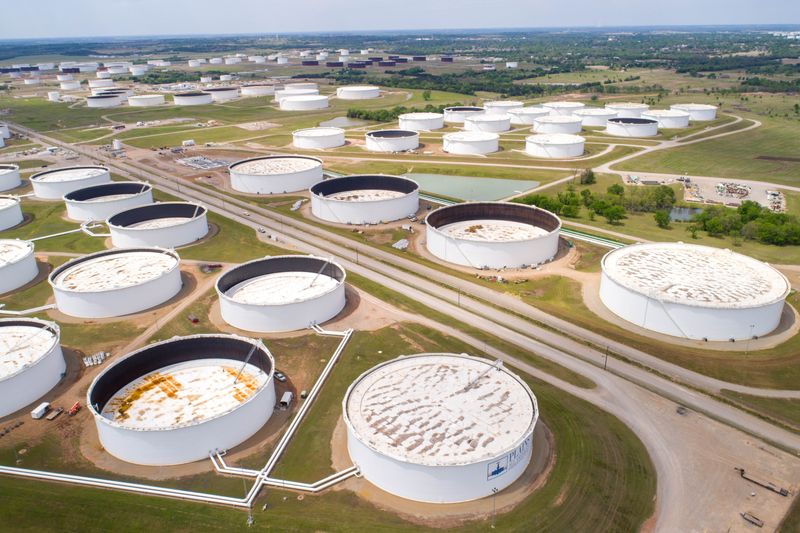By David Gaffen
(Reuters) - U.S. crude stockpiles fell while gasoline and distillate inventories both rose substantially last week as refiners ramped up production, alleviating a bit of concern about market tightness, the Energy Information Administration said on Wednesday.
Crude inventories fell by 3.7 million barrels in the week to Nov. 18 to 431.7 million barrels, compared with analysts' expectations in a Reuters poll for a 1.1 million-barrel drop.
The decline in inventories was tempered by another release of barrels from the U.S. Strategic Petroleum Reserve. The White House decided earlier this year to release 180 million SPR crude barrels after Russia's invasion of Ukraine caused global prices to surge.
Those sales are now largely finished, leaving the SPR at its lowest levels since 1984, and raising concerns about more market tightness in coming months.
Refinery crude runs rose by 258,000 barrels per day in the last week, the statistical arm of the U.S. Department of Energy said.
Refinery utilization rates rose by 1 percentage point to 93.9 of totally capacity last week, with rates on the East Coast hitting a record high, as refiners continue to run at high processing levels to meet demand.
"That’s a high rate for this early in pseudo winter. Obviously they’re worrying about the beatdown storage levels in gasoline and distillate," said Bob Yawger, director of energy futures at Mizuho in New York.
U.S. gasoline stocks rose by 3.1 million barrels in the week to 211 million barrels, compared with expectations for a 383,000-barrel rise. Gasoline stocks on the East Coast hit a 10-year-low, however, underscoring the challenge for refiners to supply one of the nation's busiest markets.
Distillate stockpiles, which include diesel and heating oil, rose by 1.7 million barrels, versus expectations for a 550,000-barrel drop.
Net U.S. crude imports rose by 1.12 million bpd, EIA said.

Oil prices, which were already lower on the day, dipped on the data. Brent crude was down $3.57, or 4%, to $84.79 a barrel, while U.S. crude dropped $3.53, or 4.4%, to $77.42 a barrel.
"The inventories are second fiddle to the G7's price cap. The EIA data is adding to the bearish sentiment given the increased refinery utilization and the resultant increase in product inventories," said Andrew Lipow, president of Lipow Oil Associates in Houston.